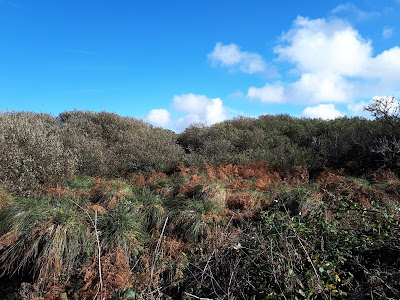First stop of the day however was a brief detour to Drift to have a look at the 3 ring necked ducks that had been around since earlier in the week. They were showing distantly but well at the far end of the reservoir.
We took the inland route first along the lanes through the farmland. There were plenty of skylarks and thrushes going over but nothing of note. A reed bunting in a hedge did get the pulse racing briefly but it wasn't too be.
The valley at Lamorna was much bigger and more extensively wooded than I expected so finding anything in it would be real luck. A calling nuthatch and 2 firecrest were the highlights but what else was lurking in there...
The walk back along the coast path was stunning with views back over Lamorna Cove and distantly across to the Lizard. With news of a red-eyed vireo on the Lizard it was exciting to come across the scrubby National Trust area called Kemyel Crease. Again it was an amazing looking area with so much potential but with so much choice for any bird, finding anything would be a challenge.
The very sunny and warm rest of the walk was a lovely way to end our week in Cornwall. We didn't manage to find a mega but the catbird was very unexpected and the supporting cast was very pleasant.




















































